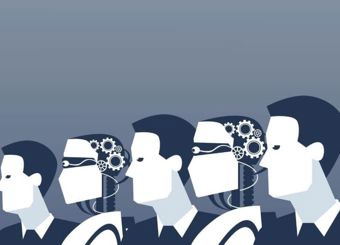What can we expect from Windows 10?
Think back to twenty years ago and you’ll remember Microsoft being the sole contender in the personal computing software market. In contrast to today Apple was then a boutique offering and others played second fiddle. But as the likes of Apple dazzled consumers with personal devices and the Internet boom created strong rivals such as Google, Microsoft’s market stronghold has, ever since, needed to do more to keep competitive.
Each new edition of Windows has represented a play for competitiveness, but until now progress has been somewhat directionless. The unsuccessful attempt at a breakthrough with Windows 8 became more of a setback, so with Windows 10 the market is expecting a vast revamp that really takes into account what both consumers and businesses want.
It seems that with Windows 10 Microsoft has spent time getting to know the needs of the user, with the big themes for me being personalisation, collaboration and convergence, whether the use is for work or pleasure.
Looking at personalisation, the biggest problem with Windows 8 was that it represented a huge change in the way the user interacted with Windows, but with a lack of choice. The Windows start menu option that we were all so familiar with disappeared and we were instead given a whole new concept to deal with. While some were fond of this change, myself included, many struggled or refused to adapt.
With Windows 10, Microsoft seems to have learned from its mistake of pigeonholing users, by making it more configurable and allowing users to choose how they interact with the software.
Also on the personalisation front, Cortana seems to be evolving into Siri’s smarter twin – able to be integrated with other services, understand user context and recommend things personal or local to the user. I can see this being taken further and being used across all Windows devices in the future.
On the collaboration front it’s good to see the likes of the Microsoft HoloLens, which progresses the video conferencing concept to a near virtual reality. With the use of holographic lenses, users can see and hear holograms. Ideal for the corporate world, a full boardroom can communicate digitally just as they would in each other’s presence.
Most of all, convergence is the key thing I’m hoping for with Windows 10. Microsoft’s long-term vision is to allow for a single software platform to be available on an increasing array of hardware and devices.
- Peter Kinder, CTO, Wax Digital
It’s time Microsoft got rid of all the platform confusion with Windows, RT, Mobile, Phone and so on. As a Windows based product developer I see this as critical to Microsoft’s viability as an enterprise platform in the future. It’ll make app development and utilisation far simpler.
True mobile synchronisation is also vital as part of this. To date Apple has beaten Microsoft to this level of unification, for example they recently launched the ability for iPhone users to send SMS messages from a Mac and the use of iMessage has become prolific across the Apple device landscape.
Enterprises can easily implement Windows 10, as there is limited need to upgrade hardware to run it. This puts them on an equal footing with Apple on this front, who have traditionally not mandated a hardware upgrade with their new operating systems. Enterprise customers can enjoy the benefit of not having to buy whole new set of PCs.
Even with Microsoft facing competition in the market, there won’t be a single person reading this who hasn’t been a user of its hardware or software at some time. At Wax Digital, we developed our software on Microsoft’s platform. It’s good to see that Windows is moving forward with what users and businesses want and has learnt from the hiccups made with Windows 8. The gimmicks are bound to draw in many of us but need to be well applied to deliver value. By optimising Windows as an enterprise platform, Windows 10 can hopefully secure its long future in the corporate environment.
It’s been well known for some time that Microsoft has been keen to go down the single platform approach with a view to migrating away from legacy desktop applications. This is sorely needed to break the ties to the rapidly declining x86 based PC desktop environment that was once its stronghold, and to keep up with or even speed past Apple and Google in the mobile market.
Can Microsoft do it? It tried very hard with windows 8 and 8.1 but was knocked back by consumers. The hope with Windows 10 is, while it may be more focused on getting the basics right, it gives Microsoft new foundations to wean people off desktop apps and into the new ‘Modern’ user interface focused world.






